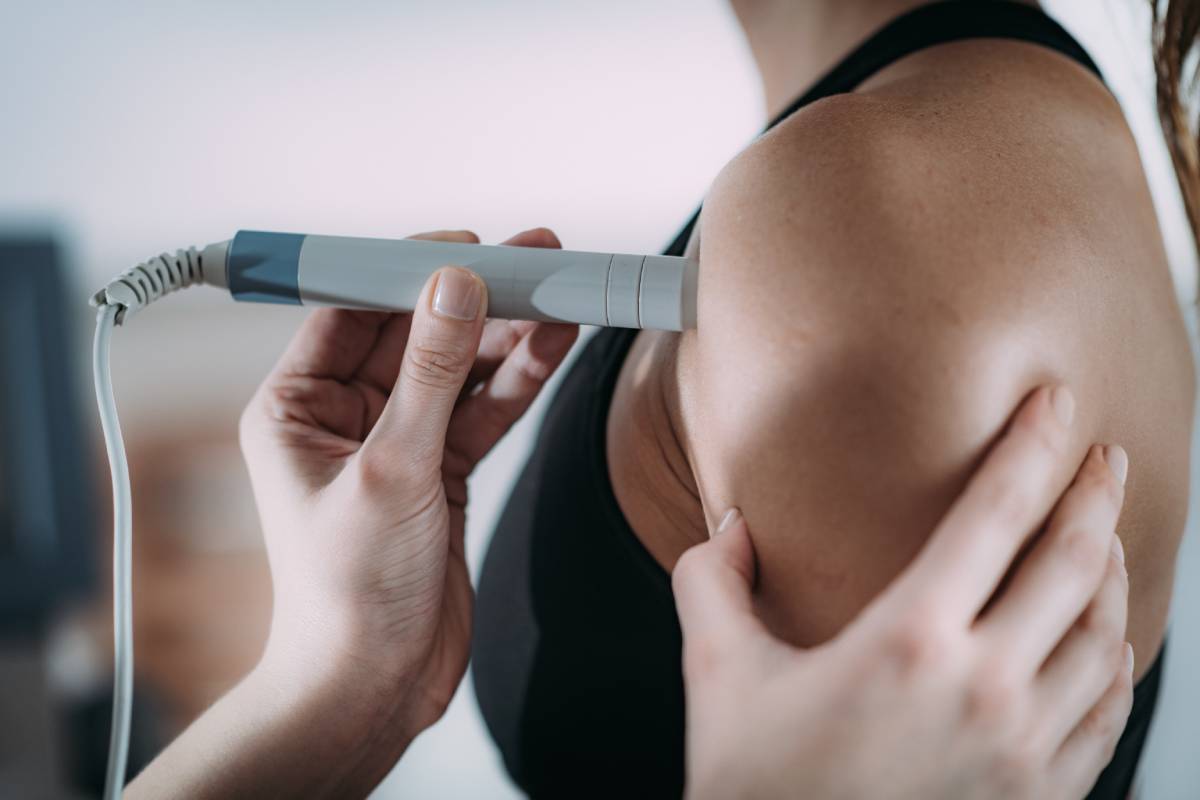Non-surgical and non-opioid methods of treating chronic pain are a focal point in medical research (1-3). Depending on the condition being treated, there may be different conservative options available for patients (2-4). For example, corticosteroid injections may be appropriate for chronic joint inflammation; physical therapy may be appropriate for maintaining and rebuilding strength around a weak joint or after injury; and over-the-counter NSAIDs may help manage moderate levels of pain (2-5). Another pain management approach is low level laser therapy, or cold laser therapy, which can cause photochemical changes in the cells of targeted areas. In particular, cold laser therapy is thought to have a number of positive effects on cellular metabolism, healing processes, and overall pain levels (1-5).
Cold laser therapy shines low-energy light at a target area that penetrates into tissues and precipitates biochemical reaction cascades. Low-energy light is used to avoid damaging tissue – specifically, this technique relies on light in the near infrared to red range (roughly 660 nm to 905 nm) (1, 2, 4). Longer wavelength light also penetrates deeper into the body and can thus better reach muscles, tendons, ligaments, and cartilage underneath the skin (2, 3, 5, 6). The light is applied for 30 to 60 s, and therapy usually requires multiple sessions (1, 6, 2, 5).
This technique was first investigated in the 1970s, as lasers became more accessible for medical uses (6). Since then, many studies have reported that laser therapy showed promise in analgesia (pain relief), wound healing, and muscle relaxation (2, 3, 5, 6). It has also been applied to other uses, such as baldness treatment and facial toning, that are not clinically proven (6).
One review of 17 randomized controlled trails (RCTs) concluded that there is low to moderate quality evidence that cold laser therapy is effective for treating tendinopathy (4). Another review of 7 RCTs found that cold laser therapy provides analgesia in patients with nonspecific chronic low back pain but does not lead to improved function (5). A meta-analysis of 22 RCTs of knee osteoarthritis patients found that this technique reduced both pain and disability in patients (3).
However, uncertainties surrounding the efficacy and mechanism of cold laser therapy for pain management remain. Other studies have reported conflicting results, and critics argue that existing trials often lack the level of standardization needed for clear comparisons and conclusions (1, 6). Regarding mechanism, a central theory proposes that low energy light prevents nitric oxide from binding to cytochrome c oxidase and slowing ATP production, but further research is needed (2, 4, 5). Studies in animals and in vitro suggest that cold laser therapy boosts the proliferation of certain cells and reduces inflammation, however, data in humans is limited (2, 4, 6).
It is clear that additional research is needed to better understand the benefits of cold laser therapy for pain management and to identify how it is best used. In addition to clarifying its effects at the cellular level and confirming that it relieves pain beyond the placebo effect, practitioners must determine the ideal wavelength, duration, and pulse parameters of the treatment (2, 5). Though evidence is currently mixed, cold laser therapy may prove to be a much-needed non-opioid, conservative treatment approach for chronic pain.
References
- Sears, B. “Cold Laser Therapy: What You Should Know.” VeryWell Health. Published February 2022. https://www.verywellhealth.com/cold-laser-therapy-5212832
- Cotler, H. B., Chow, R. T., Hamblin, M. R., & Carroll, J. (2015). The Use of Low Level Laser Therapy (LLLT) For Musculoskeletal Pain. MOJ orthopedics & rheumatology, 2(5), 00068. DOI:10.15406/mojor.2015.02.00068
- Stausholm, M. B., Naterstad, I. F., Joensen, J., et al. (2019). Efficacy of low-level laser therapy on pain and disability in knee osteoarthritis: systematic review and meta-analysis of randomised placebo-controlled trials. BMJ Open, 9, e031142. DOI: 10.1136/bmjopen-2019-031142
- Tripodi, N., Feehan, J., Husaric, M. et al. (2021). The effect of low-level red and near-infrared photobiomodulation on pain and function in tendinopathy: a systematic review and meta-analysis of randomized control trials. BMC Sports Sci Med Rehabil, 13, 91. DOI:10.1186/s13102-021-00306-z
- Huang, Z., Ma, J., Chen, J., Shen, B., Pei, F., & Kraus, V. B. (2015). The effectiveness of low-level laser therapy for nonspecific chronic low back pain: a systematic review and meta-analysis. Arthritis Research & Therapy, 17(1). DOI:10.1186/s13075-015-0882-0
- Basford, J. R. (1986). Low-Energy Laser Treatment of Pain and Wounds: Hype, Hope, or Hokum? Mayo Clinic Proceedings, 61(8), 671-675. DOI: 10.1016/S0025-6196(12)62034-5
